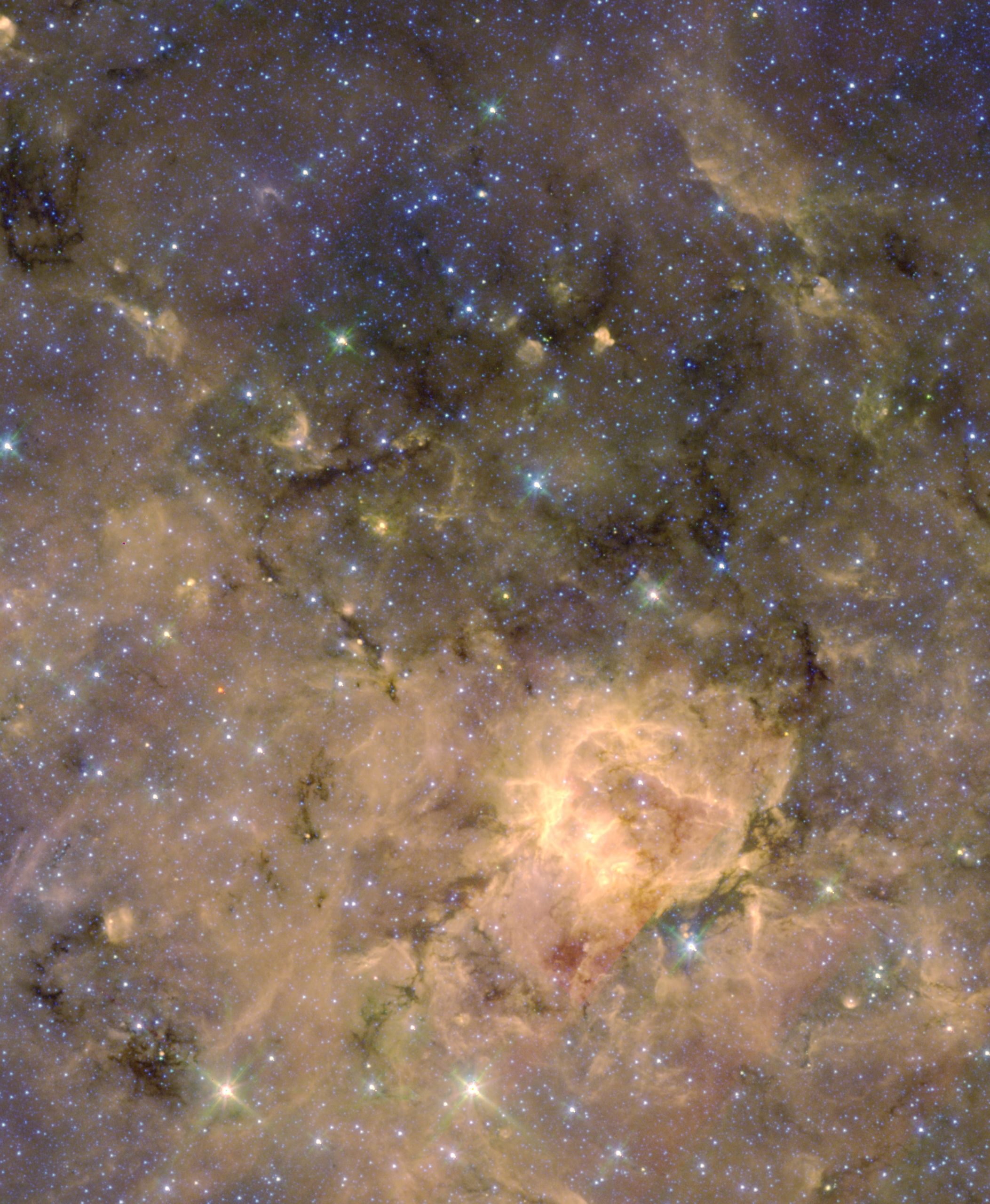The Cosmos with Westerhout 43
Westerhout 43, also known as W43, is a region of star formation of our galaxy located in the constellation of Aquila at a distance of 6 kilo-parsecs(nearly 20,000 light-years) of the Sun, that is considered the region of the Milky Way that is most actively forming stars. Despite this, however, it is so heavily obscured by the interstellar dust that it is totally invisible in the optical and must be studied using other wavelengths that are not affected by it, such as the infrared or the radio waves.
This star-forming region is located in the 5-kpc ring, a ring with that radius that encircles the central bar of our galaxy and that contains most of its molecular hydrogen as well as most of its star formation.
It is associated with a very massive complex of molecular clouds with a total mass of more than 7 million times the one of our Sun and is forming stars of all masses within star clusters that are less massive versions of those found on starburst galaxies; it still has capacity to form more clusters.
There are also massive protostars as well as stellar clusters in formation embedded within the nebula, with this star formation region likened to NGC 3603.
